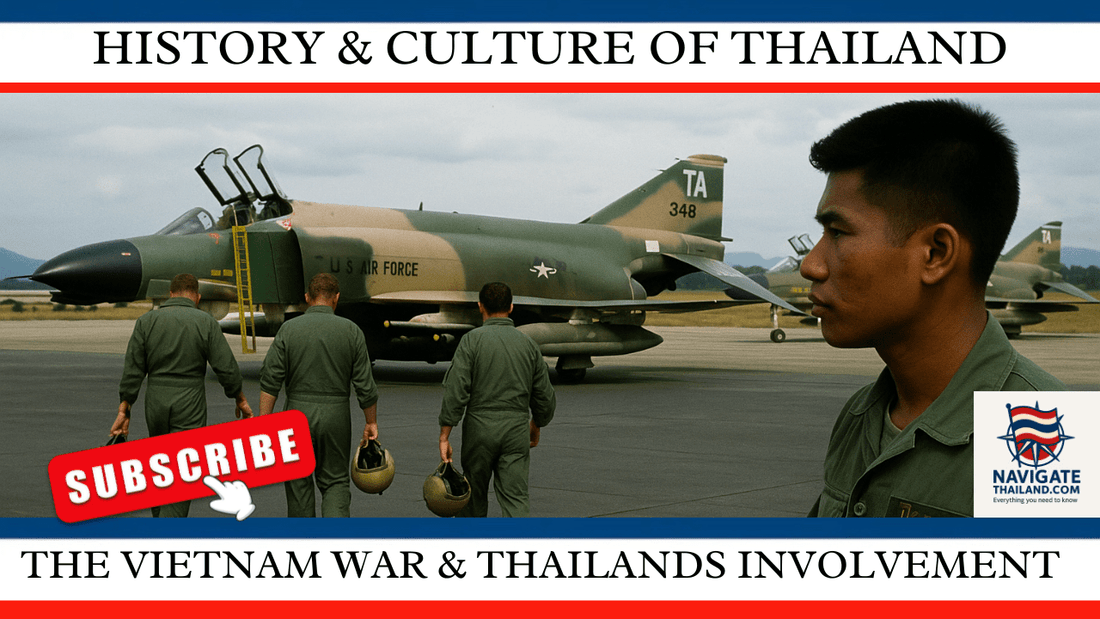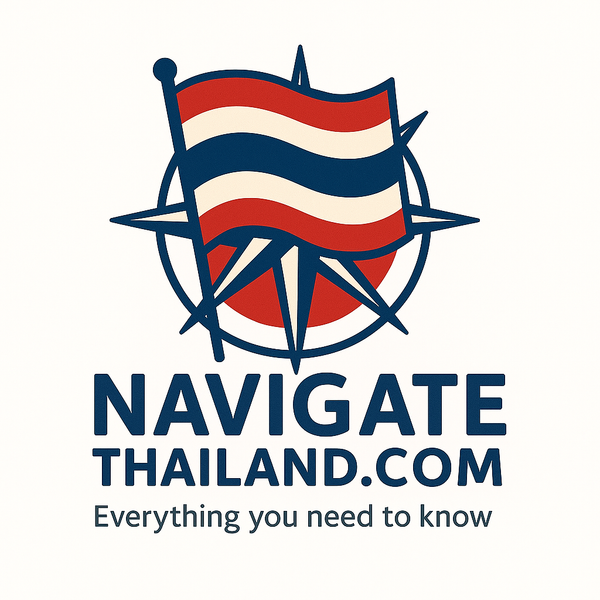
The Vietnam War and Thailand: A Comprehensive Look at Thailand’s Involvement and American Military Bases
Share
The Vietnam War, which lasted from 1955 to 1975, was one of the most significant and controversial conflicts of the 20th century. While much of the focus tends to be on the United States’ involvement in Vietnam, the role of other Southeast Asian countries is often overlooked. Thailand, in particular, played a crucial part in the Vietnam War. Its geographical location and political alignment with the United States made it a strategic ally during the conflict. This blog will take a deep dive into Thailand’s involvement in the Vietnam War, focusing on the establishment of American military bases in the country, Thailand’s contributions, and the lasting impact of this period.
For travellers visiting Thailand, understanding this lesser-known aspect of the country’s history can offer new perspectives on places you may visit, especially in regions where American military bases once operated.
Thailand’s Political Context in the 1960s
During the 1960s, Thailand was seen as a bulwark against the spread of communism in Southeast Asia. The Cold War was in full swing, and the United States was deeply invested in preventing communist expansion, particularly in countries like Vietnam, Laos, and Cambodia. Thailand’s monarchy, under King Bhumibol Adulyadej, and its military government, led by a series of generals, aligned themselves with the anti-communist efforts of the West. This political climate made Thailand a key partner for the United States during the Vietnam War.
The Southeast Asia Treaty Organization (SEATO), formed in 1954, further solidified Thailand’s role as a U.S. ally. Thailand was a founding member of SEATO, which was created to contain communism in the region. As a result, Thailand became an essential base of operations for the U.S. military throughout the Vietnam War, with American air forces flying combat and reconnaissance missions from Thai soil.
The Establishment of American Military Bases in Thailand
Thailand’s involvement in the Vietnam War was most visible through the establishment of U.S. military bases on Thai territory. At the height of the conflict, the U.S. operated from several airbases in Thailand, including Udon Thani, Korat, Ubon, Takhli, and Nakhon Phanom. These bases played a pivotal role in air operations over Vietnam, Laos, and Cambodia. American personnel stationed at these bases conducted bombing raids, reconnaissance flights, and provided logistical support.
1. Udon Thani Royal Thai Air Force Base: Located in northeastern Thailand, Udon Thani was one of the most important airbases during the Vietnam War. It served as a key site for intelligence gathering and reconnaissance missions over North Vietnam and Laos.
2. Korat Royal Thai Air Force Base: Located in central Thailand, Korat was another significant base for U.S. Air Force operations. It housed squadrons of F-4 Phantom jets, which were used for bombing missions over North Vietnam.
3. Ubon Royal Thai Air Force Base: Situated in the east, Ubon was critical for night bombing missions over Laos and North Vietnam. B-57 Canberra bombers were deployed from this base, contributing significantly to U.S. air campaigns.
4. Takhli Royal Thai Air Force Base: Takhli was used extensively by American forces for air raids on North Vietnam. It became known for its deployment of F-105 Thunderchiefs, which played a major role in Operation Rolling Thunder, a sustained bombing campaign against North Vietnam.
5. Nakhon Phanom Royal Thai Air Force Base: Due to its proximity to the Laotian border, Nakhon Phanom was used for covert operations in Laos. It was also a hub for search and rescue missions in the region.
These bases were not only essential for air combat operations but also for logistical and medical support. Thailand’s infrastructure, including its roads and ports, was used to move supplies and personnel. Additionally, American-run hospitals and medical facilities in Thailand treated wounded soldiers from Vietnam.
Thailand’s Military Involvement in the Vietnam War
Thailand’s contributions to the Vietnam War were not limited to allowing the U.S. to operate military bases. The Thai government also committed its own military forces to the conflict. In 1967, Thailand officially sent troops to Vietnam, becoming one of the few Asian countries to provide direct military support. The Queen’s Cobra Regiment, named after Thailand’s revered Queen Sirikit, was the primary Thai combat unit deployed to Vietnam.
Thailand’s military forces mainly engaged in counterinsurgency operations, patrolling areas, and providing security. While the Thai contribution was relatively small compared to U.S. forces, their participation demonstrated Thailand’s commitment to fighting communism alongside its American ally.
The Impact of American Military Presence on Thailand
The American military presence in Thailand had significant social, economic, and cultural impacts. On the economic front, the U.S. brought billions of dollars into the Thai economy. The construction and maintenance of the airbases created jobs for locals, and American soldiers and personnel stationed in Thailand contributed to local businesses, particularly in the hospitality and entertainment industries.
Cities like Udon Thani, Korat, and Pattaya became major hubs for American troops. Pattaya, which was a small fishing village before the war, rapidly developed into a bustling city, catering to American servicemen on leave. Today, Pattaya remains one of Thailand’s most popular tourist destinations, and its rapid development can be traced back to its role during the Vietnam War.
Culturally, the American presence introduced Thailand to Western music, fashion, and consumer goods. The fusion of Thai and Western cultures was particularly evident in areas surrounding the military bases. Nightclubs, bars, and entertainment venues sprang up to cater to the influx of American soldiers, creating a unique cultural exchange.
Fun Fact: Many Thai musicians during the 1960s and 70s were influenced by American rock and roll, jazz, and pop music, which they heard through interactions with U.S. troops.
Political Consequences and the Legacy of the Vietnam War
Thailand’s involvement in the Vietnam War and its close ties with the U.S. also had political ramifications. While the Thai government enjoyed the security of American support, the country also faced internal challenges from communist insurgents. The Communist Party of Thailand (CPT), inspired by the success of communist movements in Vietnam and Laos, gained traction during this period, particularly in rural areas.
The American military presence in Thailand became a target for the CPT, leading to guerrilla warfare and bombings aimed at destabilising the government. To counter the communist threat, the U.S. provided military aid and training to Thai forces, bolstering Thailand’s ability to combat internal insurgencies.
The U.S. military withdrawal from Thailand, which began in 1975 following the end of the Vietnam War, left a complex legacy. While the bases brought economic benefits and modernisation to certain regions, they also left behind challenges, including issues related to prostitution, drugs, and organised crime, which had proliferated around the military establishments.
The Aftermath and American Withdrawal
After the U.S. began its withdrawal from Vietnam in 1973, its military presence in Thailand started to wind down as well. By 1975, most American personnel had left Thailand, and the military bases were handed back to the Thai government. However, the impact of their presence remained, with lasting economic and cultural effects.
The Thai government, having aligned itself with the U.S. during the war, had to navigate a new political landscape. With the rise of communist regimes in Vietnam, Laos, and Cambodia, Thailand found itself surrounded by communist neighbours. Despite these challenges, Thailand managed to avoid falling into communism, partly due to its strong military and U.S. support.
Fun Fact: Many of the American military bases in Thailand, such as Udon Thani and Korat, are still in use today by the Royal Thai Air Force. Some even serve as air force museums, preserving the history of the Vietnam War period.
Conclusion
Thailand’s involvement in the Vietnam War was multifaceted and crucial to the American war effort in Southeast Asia. By hosting U.S. military bases, sending troops, and providing logistical support, Thailand became an essential ally in the fight against communism in the region. While the war brought economic benefits and modernisation to parts of Thailand, it also left behind a complex legacy that continues to influence the country today.
For travellers visiting Thailand, exploring the remnants of this period can offer fascinating insights into the country’s history. Whether you’re visiting former U.S. airbases, learning about Thailand’s military contributions, or discovering the cultural impact of the war, this chapter in Thai history remains an integral part of the nation’s development.
Have you visited any of the sites associated with Thailand’s involvement in the Vietnam War? Share your thoughts in the comments below! Don’t forget to share this blog with friends on social media, and stay tuned for more historical insights into Thailand. Plus, subscribe to our YouTube channel for videos that bring these stories to life!
References:
• U.S. Department of Defense – “Thailand’s Role in the Vietnam War”
• Tourism Authority of Thailand – “Historical Sites Related to the Vietnam War”
• Bangkok Post – “The American Military Presence in Thailand”
Read more of our Thailand blog series:
Thai Food Guide:Traditional Recipes and Street Eats
Everything Travellers Need to know
Thailand travel ebooks and language guides
Thailand Travel Apparel & Souvenir Gifts
Subscribe to our YouTube channel Navigate Thailand to see our most popular Thailand travel blogs turned into videos:
Navigate Thailand YouTube channel
